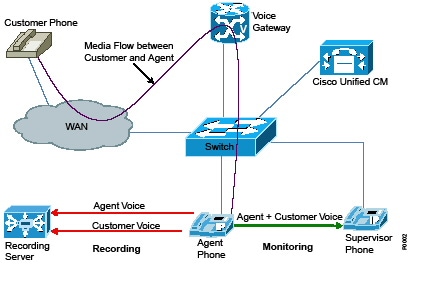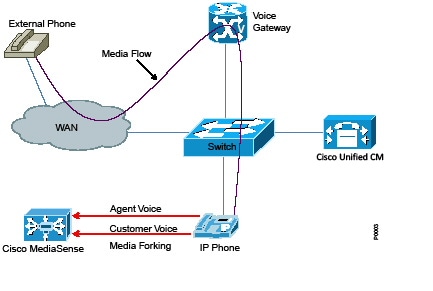Silent Monitoring
Cisco Unified CM uses an architecture based on the IP phones to provide call monitoring and recording for audio calls. It uses the IP phone built-in bridge (BIB) to enable call monitoring and recording.For call monitoring, the agent phone combines the two voice RTP streams on the agent phone and sends the resulting stream to the supervisor phone. Call monitoring can be invoked by call center applications through the JTAPI or TAPI interfaces of Unified CM.
The call recording device is configured on Unified CM as a SIP trunk device. For recording, the agent phone forks the two streams to the recording server. The two streams, one for the agent voice and one for the customer voice, get recorded separately. The recorded streams can be mixed to produce the conversation using third-party applications.
Figure 25-2 illustrates the basic call recording setup using Unified CM Silent Call Monitoring and Call Recording features. Agent and supervisor phones are CTI controlled.
Figure 25-2 Call Monitoring and Recording with Unified CM
 For details on the Unified CM Silent Call Monitoring and Call Recording features, refer to the latest version of the Cisco Unified Communications Manager Features and Services Guide , available at
For details on the Unified CM Silent Call Monitoring and Call Recording features, refer to the latest version of the Cisco Unified Communications Manager Features and Services Guide , available at
http://www.cisco.com/en/US/products/sw/voicesw/ps556/prod_maintenance_guides_list.html

http://www.cisco.com/en/US/products/sw/voicesw/ps556/prod_maintenance_guides_list.html


No comments:
Post a Comment